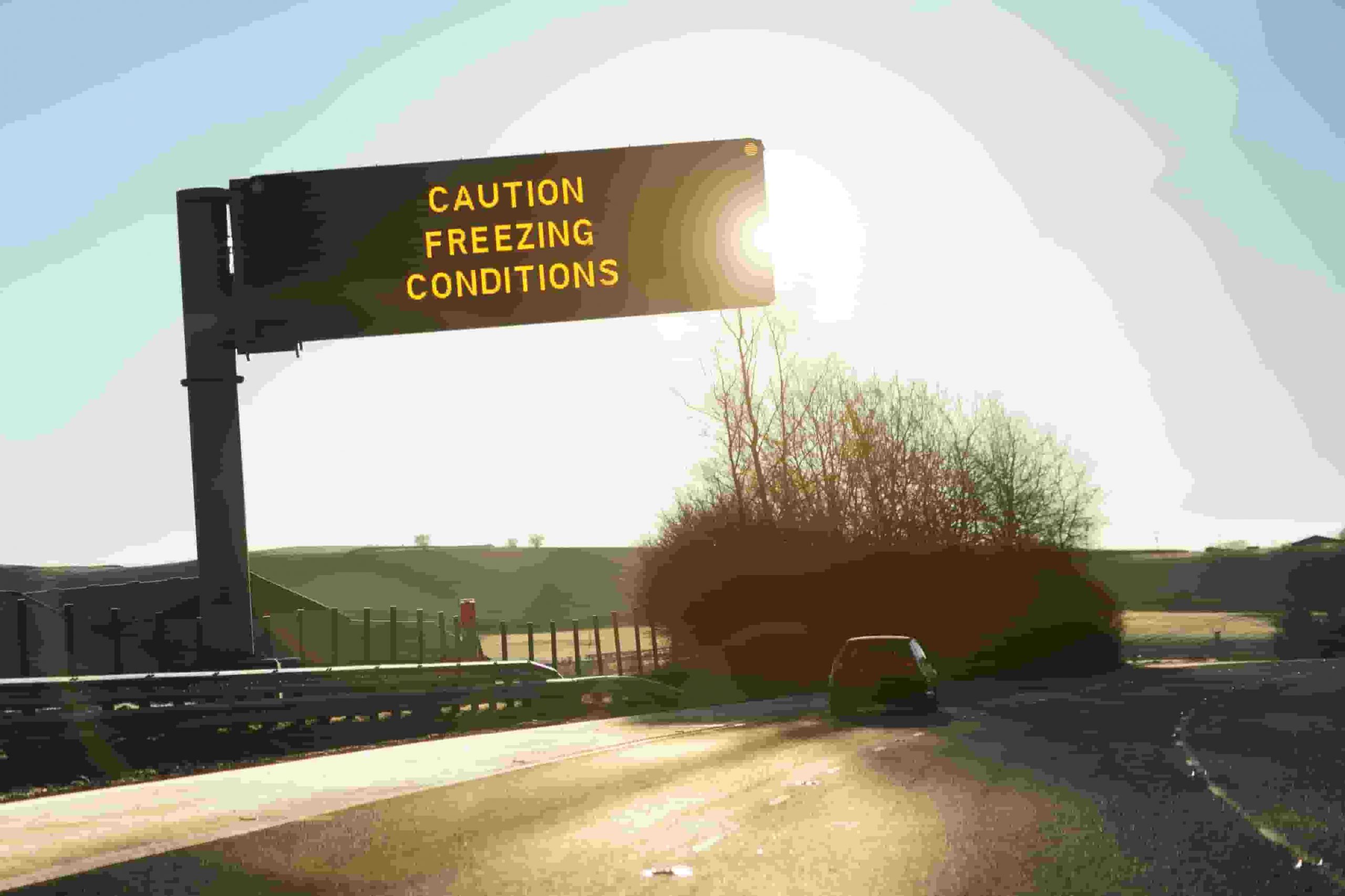How to Stay Safe – Driving in winter

Driving safely is a must all year round, but of all the seasons, it’s especially important to drive with the utmost care and attention during the winter. The combination of adverse weather conditions and long, dark nights can make hitting the roads more dangerous. It’s crucial that you take extra precautions when you’re behind the wheel during the chilly season. To help you stay safe on the highways, we have put together some winter driving and vehicle maintenance tips.
Driving In Winter Weather
There are various ways to prepare for the common winter weather conditions, and it’s important to know the best practices when driving in these conditions.
Driving In Snow And Ice
Avoid braking suddenly. Instead, reduce your speed smoothly and gradually. Drive significantly slower than normal to reduce your chances of skidding. Make sure you approach bends and corners with extra care. If you lose control, don’t panic. Take your foot off the accelerator, making sure your wheels are positioned in the direction you want to go in. To avoid wheel-spin, pull away in second gear and ease your foot off the clutch.
Driving In Fog
Avoid driving in foggy conditions unless it’s absolutely necessary. Switch on your headlights and fog lamps to help with visibility. Don’t be tempted to ‘hang on’ to the car in front. You may get too close to brake safely.
Driving In Rain
Stopping distances increase when roads are wet, so make sure you leave double the gap between you and the vehicle in front compared to what you would normally do in dry conditions. Always use your wipers and headlights to help improve your vision. Slow down before driving through large puddles.
Best Practices For Winter Driving
No matter the weather, there are various ways we can drive more safely during the winter. Some of our top tips are right here, but if you want to read in more detail about how to stay safe when driving in the winter, have a read of our Drive Safely in the Winter ebook.
Prepare Before Each Journey
We may not like to think about it, but the roads become more dangerous during the winter months, making accidents more common. We recommend that you use your boot as a storage space for items you may need in an emergency or if your car were to break down on a cold winter’s night. Some important items to consider are a car blanket, spare wheel and a first aid kit.
Additionally, it can be easy to set off on a big journey without stopping to check if you have enough fuel in the tank first. Even though it’s more than likely that you’ll pass petrol stations on your travels, there’s no harm in being fully prepared for the drive ahead. By filling up beforehand, you’ll be able to drive for longer without needing to stop to refuel. What’s more, having a full tank could help you out should you encounter any delays or if you’re rerouted due to the bad weather.
Unfortunately, it’s not always possible to foresee a breakdown. With that in mind, it pays to pack an emergency kit in case you find yourself in a sticky roadside situation. In your kit, you should include a pair of jump leads, a torch, spare fuses, an ice scraper, a de-icer and some dispersant spray, as well as bottles of water, snacks, a pair of gloves, a scarf and a warm blanket. These ‘just in case’ essentials could prove extremely useful if you’re unexpectedly caught out in the cold.
Perform A Vehicle Check Before Each Journey
Before you set off on any long distance trips, it’s important to check your vehicle to make sure everything is in order. During the winter, the last thing you need is to have a breakdown from something that could’ve been easily avoided. We recommended you make a checklist to ensure the functionality of your car’s lights, brakes, tyres, window wipers and heating system.
Keep Your Distance
Our main road safety tip is to keep your distance between the vehicles in front of you at all times. It takes longer for a car to stop in the winter, so make sure to allow time for this. In particular, we recommend avoiding harsh braking as there may be frost on the roads or heavy rainfall, which can both affect your vehicle’s ability to slow down.
Be Aware Of Black Ice
One of winter’s biggest dangers to drivers is black ice, mainly because it is so hard to spot. As we have mentioned above, it is important to keep distance between cars especially with the risk of black ice on the roads. It is recommended that you look out for shaded areas on the roads as this is a common place for black ice.
Prepare For The Unexpected By Choosing The Best Insurance Plan
No matter the season, it always pays to have the best insurance policy for you. Be it breakdowns, thefts or accidents, insurance will protect you against many problems you may face as a car owner. Find the best insurance deal with Chill Insurance – we’d be happy to help.







